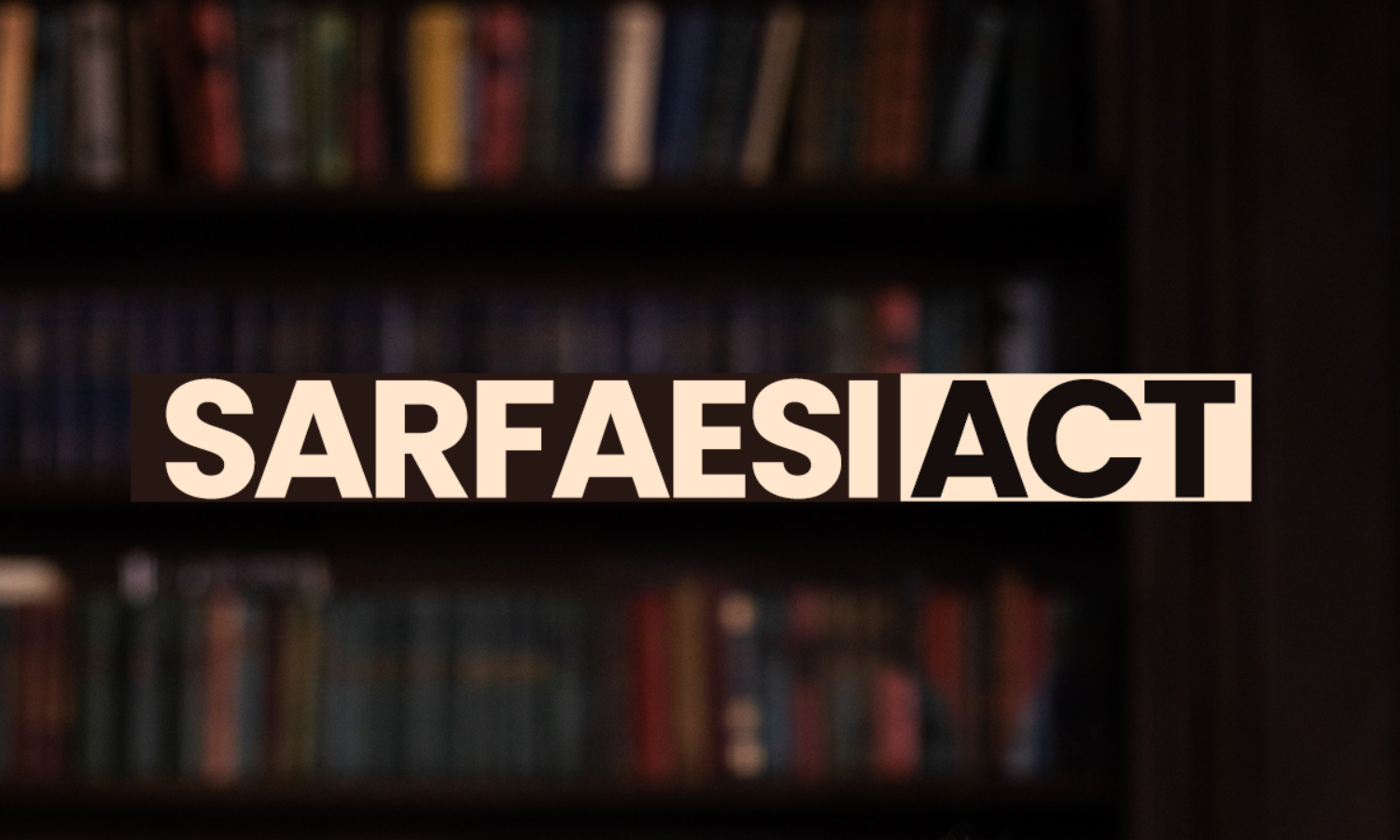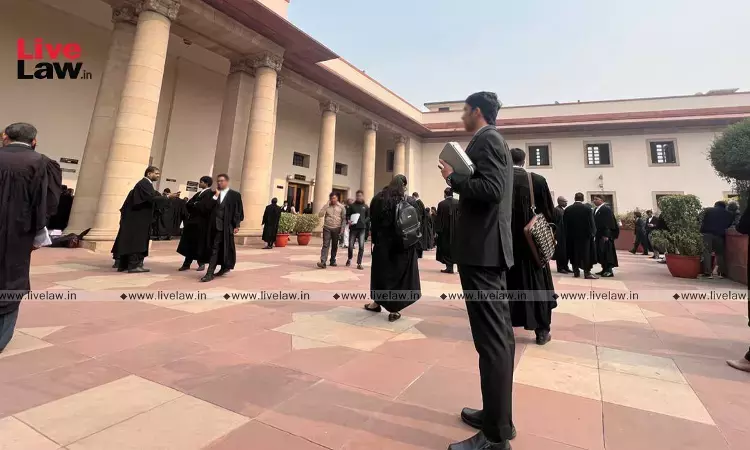SARFAESI Act, 2002, Insertion Of Section 17 (4A) By Way Of Amendment Act Of 2016 & Its Implication On Rights Of Tenant Under Tenancy Law

Securitization and Reconstruction of Financial Assets and Enforcement of Security Interests Act, 2002 ( in short“SARFAESI”) was enacted to strengthen the Indian banking system by way of efficient or rapid recovery of non-performing assets of the banks and financial institutions which allows banks and financial institutions to auction properties when borrower fail to repay...
Securitization and Reconstruction of Financial Assets and Enforcement of Security Interests Act, 2002 ( in short“SARFAESI”) was enacted to strengthen the Indian banking system by way of efficient or rapid recovery of non-performing assets of the banks and financial institutions which allows banks and financial institutions to auction properties when borrower fail to repay their loans.
This legislation were primarily enacted to facilitate recovery of defaulting loans at reasonable period of time . However, the said SARFAESI Act is yet to live in harmony with tenancy rights created over secured assets .
The relevant provisions of SARFAESI Act regarding recovery procedure prescribed in its Sec 13 which deals with enforcement of security interest. Sec 14 empowers the Chief Metropolitan Magistrate or District Magistrate to assist secured creditor in taking possession. Sec 17 is related to application against measures to recover secured debts.
Before the amendment in 2016 in light of Enforcement of Security Interest and Recovery of Debts Laws and Miscellaneous Provisions (Amendment) Act, 2016, the right of a tenant/lessee in case of eviction process initiated under SARFAESI was vague and not definitive. But with the addition of Section 17 (4A) by way of the aforesaid Amendment Act of 2016, these remedies now stand modified since a lessee can now approach the Debt Recover Tribunal to adjudicate upon its tenancy rights.
Moot question is can a bank resort to any of the provisions of the SARFAESI Act for eviction of tenant in light of existence of relevant rent laws and if so, to what extent ? And, whether a tenant is entitled to approach civil court even if the provision of SARFAESI Act is invoked ?
There were few judgments passed by the Supreme Court on the issue of SARFAESI Act and te
nant’s right and the recent one is Bajarang Shyamsunder Agarwal vs central Bank of India Anr , reported in (2019) 9 SCC 94. The Apex Court in the said case held that if lawful possession of secured asset is not with borrower, but with lessee under valid lease then Secured creditor cannot take possession of secured asset until lawful possession of lessee gets determined. Chief Metropolitan Magistrate /District Magistrate can pass order for delivery of possession of secured asset in favour of secured creditor only when he finds that lease has been determined. However, if CMM/DM comes to conclusion that there was no valid lease either before creation of mortgage or after creation of mortgage he can pass order for delivery of possession of secured asset. It is submitted that the right of rightful tenant need to be respected in appropriate cases and cannot be compromised under SARFAESI Act proceedings. It was also held that if tenants claim that he is entitled to possession of secured asset for term of more than year which to be supported by execution of registered instrument. In absence of registered instrument, if tenant relies on unregistered instrument or oral agreement accompanied by delivery of possession, tenant is not entitled to possession of secured asset for more than period prescribed under section 107 of T.P. Act.
The aforesaid judgment clarified the interplay between laws of tenancy and debt recovery and held that protection from recovery proceedings under the SARFAESI Act is not available to a 'tenant-in-sufferance', i.e a tenant who continues to be in possession even after the expiry of the lease period. But protected those tenant who are within the zone of definitive period of tenancy supported by registered instruments.
The Supreme Court in the case of Vishal N. Kalsaria vs Bank of India & ors reported in (2016) 3 SCC 762 held that the SARFAESI Act and the Rent Control Act are two pieces of legislation which operate in two different fields / spheres and the SARFAESI Act cannot be used by a secured creditor to evict a tenant.
The Supreme Court in the case of Vishal N. Kalsaria v. Bank of India (supra) has categorically held that granting of leasehold rights is quite different from a tenancy and once tenancy is created, the tenant is entitled to the protection of the relevant tenancy act and can be evicted only by following the due process of law contained in such tenancy act. Paragraphs 29 and 37 of the said judgment are as below:
“29 . When we understand the factual matrix in the backdrop of the objectives of the above two legislations, the controversy in the instant case assumes immense significance. There is an interest of the bank in recovering the Non Performing Asset on the one hand, and protecting the right of the blameless tenant on the other. The Rent Control Act being a social welfare legislation, must be construed as such. A landlord cannot be permitted to do indirectly what he has been barred from doing under the Rent Control Act, more so when the two legislations, that is the SARFAESI Act and the Rent Control Act operate in completely different fields. While SARFAESI Act is concerned with Non Performing Assets of the Banks, the Rent Control Act governs the relationship between a tenant and the landlord and specifies the rights and liabilities of each as well as the rules of ejectment with respect to such tenants. The provisions of the SARFAESIAct cannot be used to override the provisions of the Rent Control Act (emphasis added) . If the contentions of the learned counsel for the respondent Banks are to be accepted, it would render the entire scheme of all Rent Control Acts operating in the country as useless and nugatory. Tenants would be left wholly to the mercy of their landlords and in the fear that the landlord may use the tenanted premises as a security interest while taking a loan from a bank and subsequently default on it. Conversely, a landlord would simply have to give up the tenanted premises as a security interest to the creditor banks while he is still getting rent for the same. In case of default of the loan, the maximum brunt will be borne by the unsuspecting tenant, who would be evicted from the possession of the tenanted property by the Bank under the provisions of the SARFAESI Act. Under no circumstances can this be permitted, more so in view of the statutory protections to the tenants under the Rent Control Act and also in respect of contractual tenants along with the possession of their properties which shall be obtained with due process of law (emphasis added) .
37. It is a settled position of law that once tenancy is created, a tenant can be evicted only after following the due process of law, as prescribed under the provisions of the Rent Control Act. A tenant cannot be arbitrarily evicted by using the provisions of the SARFAESI Act as that would amount to stultifying the statutory rights of protection given to the tenant .A non obstante clause (Section 35 of the SARFAESI Act) cannot be used to bulldoze the statutory rights vested in the tenants under the Rent Control Act (emphasis added).. The expression “any other law for the time being in force” as appearing in Section 35 of the SARFAESI Act cannot mean to extend to each and every law enacted by the Central and State Legislatures. It can only extend to the laws operating in the same field.“
From the reading of above it appears that bar contained in Section 34 of the SARFAESI Act would not affect the tenant’s right , in as much as, the Supreme Court in the case of Vishal N. Kalsaria vs. Bank of India(supra) has categorically held that the SARFAESI Act does not override the provisions of a Rent Control Act of a State and a tenant is entitled to the protection of such rent control act and the SARFAESI Act cannot be pressed into service to evict a tenant, dehors the provisions of the Rent Control Act.
After the aforesaid Kalsaria judgment (supra) there was an amendment to SARFAESI Act in 2016. Enforcement of Security Interest and Recovery of Debts Law and Miscellaneous Provisions (Amendment) Act, 2016 (No. 44 of 2016) was amended in 2016 . With the addition of section 17 (4A) by way of the Enforcement of Security Interest and Recovery of Debts Laws and Miscellaneous Provisions (Amendment) Act, 2016, these remedies now stand modified since a lessee can now approach the Debt Recover Tribunal to adjudicate upon its tenancy rights.
But , is the said Amendment Act of 2016 truly a revalidating Act overriding the Kalsaria judgment (supra) ? On careful reading it appears that the said amendment to the Legislature has not absolutely vested the powers and jurisdiction to determine tenancy with regard to the mortgaged property with the Debts Recovery Tribunal. The interpretation of the law cannot be made in a straitjacket formula and all cases cannot be tried in the said manner. The amended provisions of the SARFAESI Act may not be interpreted to mean that the jurisdiction of the civil court would be barred in all cases. The amendment cannot be said to have taken away the right of a tenant under the rent control act and that the judgment of Vishal N. Kalsaria vs. Bank of India(supra) has been negated by the said amendment.
The aforesaid Amendment Act of 2016 do not appear to be a revalidating Act . The Supreme Court in catena of judgments held that judgment and order of court declaring a legislative action invalid can be rendered ineffective by the legislature by retrospectively altering or removing very basis of invalidity on which the judgment and order is made. These judgments were reported in :- i) 2003(4)SCC 298A , ii) 1984(4) SCC 545 , iii) 1993(Supp 4 SCC 461, & iv) 2003(9) SCC 92.
The aforesaid Amendment Act of 2016 do not contain any non-obstante clause and right to approach before the civil court had not been taken away. The judgment in Vishal N. Kalsaria vs. Bank of India(supra) still seems to hold as good law laid down by the Supreme Court and is a prevailing law under Article 141 of the Constitution of India and same was not negated by the said Amendment Act of 2016 in view of the fact that the said judgment was passed making distinction between SAFAESI Act and Rent Control Act and the tone and tenure of the Amendment Act, 2016 clearly reflects that the tenant is not barred from taking legal recourse for its protection under relevant Rent Control Act. Further , the Supreme Court in S.T. Sadiq vs State of Kerala & ors , reported in 2015(4) SCC 400 ( @para 13) held that :
“13. It is settled law by a catena of decisions of this Court that the legislature cannot directly amend a judgment of court . The legislative function consists in “making” law (see Article 245 of the Constitution ). If the legislature were at liberty to annul judgments of courts, the ghost of bills of attainder will revisit us to enable legislature to pass legislative judgments on matters which are inter parties. …..”
The Amendment Act, 2016 only provides that the DRT can determine whether the said tenancy was created after the issuance of the notice of default and demand by the bank under section 13 (2) of the SARFAESI Act and in such an event the DRT can pass such orders as it deems fit in accordance with the provisions of the SARFAESI Act, meaning thereby that the DRT can grant the reliefs as contemplated under the provisions of the SARFAESI Act. The DRT therefore cannot grant the relief/reliefs as contemplated under the Rent Control Act, which is a complete code in itself and as held in the judgment of the Supreme Court in Vishal N. Kalsaria vs. Bank (supra) and intention of the Supreme Court was that the provisions of the SARFAESI Act cannot be used to bulldoze a tenant out of his tenanted premises.
Further, the tenancy suit is a declaratory in nature and the DRT has not power even by way the Amendment Act of 2016 to pass declaratory decree and such right was not taken away by any express provision by the said amendment.
On above context , if we go through Section 9 of Code of Civil Procedure, 1908 which stipulates that :-
"The Courts shall (subject to the provisions herein contained) have jurisdiction to try all Suits of a civil nature excepting suits of which their cognizance is either expressly or impliedly barred."
Now, let’s read Section 34 of the SARFAESI Act which stipulates that :-
"Civil Court not to have jurisdiction - No civil court shall have jurisdiction to entertain any suit or proceeding in respect of any matter which a Debts Recovery Tribunal or the Appellate Tribunal is empowered by or under this Act to determine and no injunction shall be granted by any court or other authority in respect of any action taken or to be taken in pursuance of any power conferred by or under this Act or under the Recovery of Debts Due to Banks and Financial Institutions Act, 1993 (51 of 1993)."
Conjoint reading of the aforesaid Section 9 CPC and Section 34 of SARFAESI Act, it can be observed that under Section 9 of CPC, the Civil Court is barred from trying only those cases which is specifically or impliedly barred through enactment. Interestingly, Section 34 of SARFAESI Act specifically ousts the jurisdiction of civil court in respect of two legislations only , i.e. i) SARFAESI Act and ii) the Recovery of Debts Due to Banks and Financial Institutions Act, 1993. But it does not specifically bar those suits where relief is claimed under the Rent Control Act, which is a totally different piece of legislation and same was specifically kept out from the purview of the Section 34 of SARFAESI Act. The Supreme Court has also through Vishal N Kalsaria (Supra)judgment upheld the primacy of the Rent Control Act over the SARFAESI Act for the protection of tenants. Further, aforesaid Section 34 of the SARFAESI Act was not amended by the aforesaid Amendment Act of 2016 and as such, there seems to be no bar on the civil court to proceed with the case by any aggrieved tenant under the Rent Control Act.
The law laid down by the Supreme Court in Vishal N Kalsaria (Supra) unequivocally laid down the law that SARFAESI Act cannot be override the Rent Control Act. In absence of any revalidating legislation and non-obstante clause to such Amendment Act, 2016 to that effect , it seems there is no negation to the ration laid down in Vishal N Kalsaria (Supra) judgment .
Under Rent Control Act, a tenant is not liable to be evicted so long as the tenant pays the rent to the full extent allowable under the said Rent Control Act and performs the conditions of the tenancy. Therefore, the tenants are entitled to the protection as a tenant under the provisions of the Rent Control Act and cannot be evicted from the scheduled premises without following the due process of law as laid down in the relevant Rent Control Act as well as the law laid down in aforesaid Vishal N. Kalsaria (supra) & Bajarang Shyamsunder Agarwal( supra) judgment.
While going through the Harshad Govardhan Sondagar v. International Assets Reconstruction Co. Ltd., reported in (2014) 6 SCC 1 and Section 13 (13) of the SARFAESI Act, it can be observed that the provisions of the SARFAESI Act relate to a lease and not at tenancy. The inter-se rights and obligations of the parties to a lease are governed by the Transfer of Property Act, 1882 whereas the relationship between a landlord and tenant are governed by the relevant tenancy Act of a State. The case of Harshad Govardhan Sondagar (supra) is in relation to a lease created under the transfer of property act and not a tenancy under the relevant Tenancy Act. Moreover Section 13 (13) of the SARFAESI Act prohibits the “transfer” of the mortgaged property by way of sale, lease or otherwise, after the issuance of the notice under section 13 (2) of the SARFAESI Act without the prior written consent of the secured creditor. But tenancy created in respect of the scheduled premises is not a “transfer” within the meaning of the said section. Transfer of an immovable property can take place only by the modes provided in the transfer of property act and tenancy is not a transfer within the meaning of law.
The ratio in various decisions cited hereinabove clearly lay down the principle to be followed about the tenancy rights of an independent bona fide third party which take precedence over other rights. That being said, the practice of creation of tenancy rights for the purposes of defeating the interests of secured creditor has been looked upon by the courts. The courts, thus being wary of the menace that such non-performing assets and slow recoveries create, had made endeavor to maintain balance in interpreting SARFAESI Act and relevant Rent Control legislations as harmoniously as possible.
The author is an Advocate on Record at the Supreme Court of India. Views are personal.




